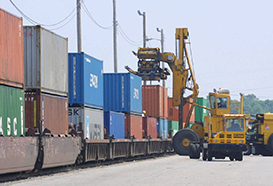Trucking, Rail Outlook Poor in 2016, Analysts Say
Trucking, Rail Outlook Poor in 2016, Analysts Say
Shippers have the power as low fuel prices and stagnant freight volumes increase the availability of trucks and railcars, analysts say.

Growth in freight volumes slowed in the final months of 2015 after a strong start to the year. Shippers are having an easier time finding trucks to hire as a result. That’s giving them power to demand cheaper rates, reversing the dynamic seen for much of 2014 and early 2015, when trucking companies could charge higher prices because they knew shippers had few alternatives.
That dynamic is likely to continue this year, with freight rates held back by widespread availability for trucks. With the price of fuel down 25%, providers of truckload and less-than-truckload services have been forced to slash prices. A similar dynamic is at work in the rail market, where plunging coal and oil volumes have freed up cars and driven down rates.
“This market’s pendulum is swinging in favor of shippers,” analysts with Cowen and Co. wrote in a research note Thursday.
Even intermodal carriers, which carry freight over long distances using a combination of trains and trucks, are seeing prices drop for 2016. One third-party logistics executive told Cowen analysts, “economic signs for 2016 overall are not promising.”
But transportation analysts with FTR painted a rosier picture for the trucking industry for the coming year. Speaking on a conference call Thursday, FTR’s Noel Perry said truckload and rail-carload pricing would stage a slight “comeback” this year. New regulations set to kick in later this year and early in 2017 should also drive up rates by reducing the number of available trucks and drivers, he said.
“We’re still pretty optimistic in 2016,” Mr. Perry said.

